What Determines If a Speed is Safe for Your Boat? Essential Factors Explained
Determining a safe speed for your boat is crucial for ensuring a secure and enjoyable boating experience. There are numerous factors that contribute to safe speed, including the boat operator's experience, unique boat characteristics, external conditions, and local regulations. By considering these aspects, boaters can effectively maintain a speed that not only preserves control over their vessel but also ensures the safety of all passengers on board.
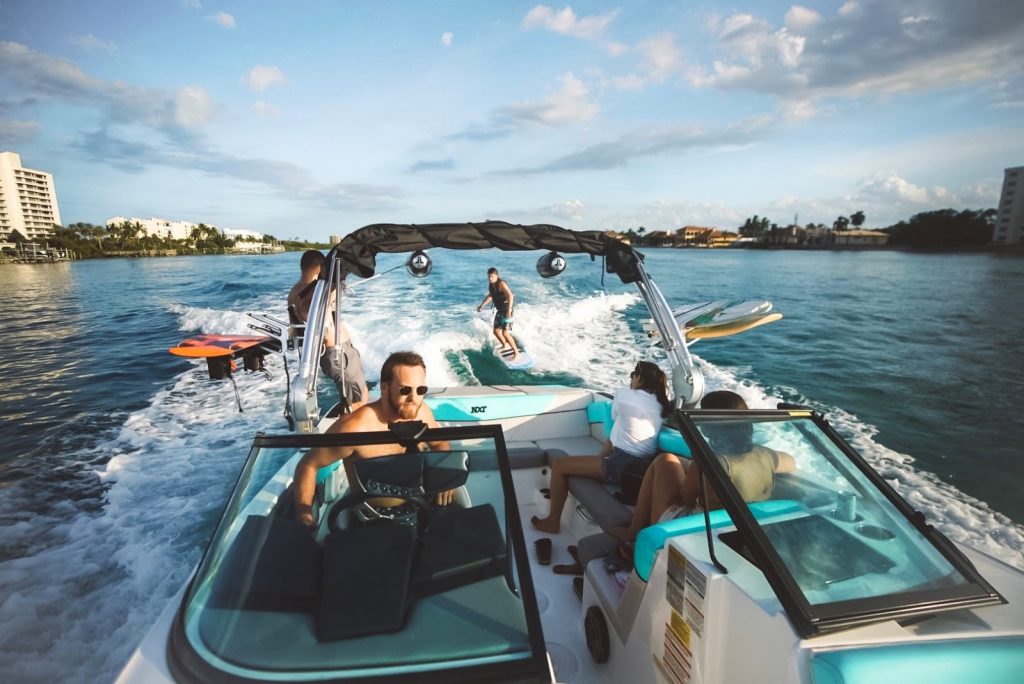
Understanding the role of the boat operator involves recognizing that their skill level, decision-making abilities, and attentiveness significantly impact safe speed. Factors such as boat size, design, and propulsion also play a critical role in calculating safe speed. Lastly, external conditions like weather, water conditions, and navigational hazards along with internal factors such as boat maintenance, equipment, and passenger behavior must all be taken into account when determining a safe boat speed.
Key Takeaways
- Boat operators must consider their experience, boat characteristics, and external conditions when determining safe speed
- Adhering to safety guidelines and local regulations helps ensure a secure boating experience
- Awareness of potential hazards and adapting to changing conditions is crucial for maintaining safety on the water

Understanding Safe Speed for Boating
Concept of Safe Speed
Safe speed for boating refers to the velocity at which a boat operator can maintain proper control and efficiently respond to any developing situations. One crucial aspect of safe speed is the ability to avoid collisions and stop within a suitable distance in relation to the predominant conditions and circumstances (source).
Legal Speed Limits
While specific legal speed limits might be applicable in certain areas, boating regulations primarily focus on maintaining a velocity that allows the operator to avoid collisions and establish a stopping distance consistent with the environment (source). It is the responsibility of boat operators to adhere to these limits and ensure they are operating at a safe speed.
Environmental Factors Influencing Safe Speed
Various environmental factors can affect the safe speed for boating, including:
- Weather: Weather conditions like rain, snow, or fog can adversely impact visibility and require operators to adjust their speed accordingly (source).
- Wind: High winds can cause increased waves, making it difficult to navigate safely. Boaters should be aware of wind conditions and decrease their speed when needed.
- Visibility: Boat operators should be cautious in low-visibility situations, such as during fog, rain, or twilight hours, and adjust their speed to ensure they can see and respond to potential hazards (source).
- Sea and Water Conditions: Challenging water conditions, such as currents, waves, or debris, can impact boat handling. In these instances, operators should adjust their speed to maintain control.
- Traffic and Traffic Density: In areas with high boat traffic, operators should maintain a safe speed to avoid collisions and leave sufficient room for other vessels to maneuver. They must also be aware of the boat types in the area, as different boats may have different speed capabilities (source).
In summary, determining a safe speed for your boat requires considering various factors, including legal speed limits, weather, visibility, sea conditions, and traffic density. By being aware of these elements and adapting accordingly, boaters can ensure they remain in control and avoid potential accidents.
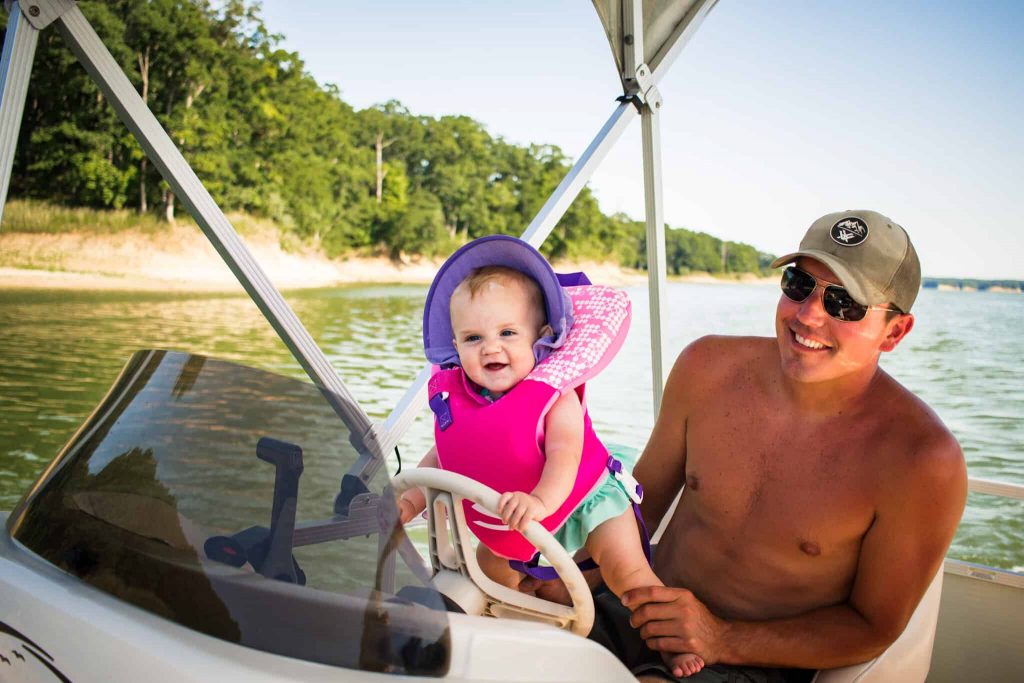
The Role of the Boat Operator
Risk Assessment
A boat operator plays a crucial role in determining the safe speed for their vessel. They must constantly assess the risks and navigate through various hazards to ensure safety on the water. Some of the factors to consider include weather conditions, visibility, and the presence of other boats or obstacles in the vicinity.
It's essential for the boat operator to maintain a safe distance from other vessels and avoid collisions, especially in congested waterways or during limited visibility situations. Being aware of their surroundings, the operator should always adjust the boat's speed accordingly.
Control and Maneuverability
Control and maneuverability are critical aspects affecting a boat's safe speed. The operator needs to have a good understanding of their vessel's capabilities, including its stability, stopping distance, and handling characteristics under different circumstances.
When piloting a boat, it's crucial to consider factors such as wind, waves, and currents which may impact the vessel's stability and maneuverability. Operating at excessive speeds in adverse weather conditions can compromise the safety of the boat and the passengers onboard.
In conclusion, a boat operator is responsible for assessing risks, maintaining control, and effectively maneuvering their vessel to ensure the safety of everyone on board. By considering various factors such as visibility, navigation hazards, and the vessel's handling capabilities, they can determine the appropriate speed to minimize risks and avoid collisions.

The Impact of Boat Characteristics
Boat Type and Size
The type and size of a boat play a crucial role in determining the safe speed for the vessel. Different boat types, such as speedboats, pontoons, and jet skis, have varying speed capabilities and handling characteristics. For example, speedboats are designed for high speeds and better maneuverability at those speeds, while pontoons are more focused on stability and comfort, which requires them to be operated at a slower pace. The boat's size also influences its stability, with smaller boats being more susceptible to disturbances in the water and needing to be operated at lower speeds compared to larger, more stable vessels.
Engine and Propeller Specifications
Another aspect of a boat's characteristics that affects its safe speed is the engine size and propeller specifications. The engine's horsepower directly impacts the vessel's maximum speed, with larger engines being able to push the boat faster through the water. Therefore, a boat's safe speed is also influenced by the engine size, as more horsepower can lead to faster speeds, necessitating more caution and control from the operator.
The propeller specifications, such as the material, diameter, pitch, and blade count, play a role in determining the boat's thrust, efficiency, and maneuverability. For example, a higher pitch propeller can increase the boat's top speed, while a lower pitch can provide better overall efficiency and acceleration. Understanding the propeller's characteristics helps the operator in making informed decisions regarding the safe speed for their particular type of boat, taking into consideration the vessel's balance between speed, stability, and efficiency.
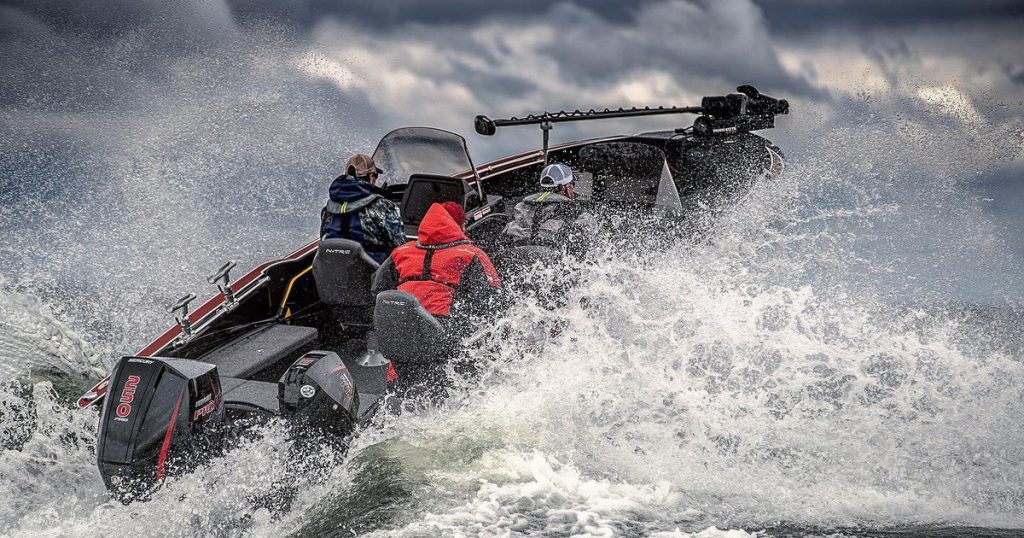
Considering External Conditions
Weather and Sea Conditions
When determining a safe speed for your boat, it is crucial to take into account the prevailing weather and sea conditions. Wind and weather conditions can significantly impact the boat's handling and safety. For instance, strong winds may cause rough waters, leading to an increased risk of capsizing or losing control of the boat, making it necessary to slow down.
Poor visibility due to fog, rain, or heavy overcast conditions also calls for a reduction in speed. It is essential to be aware of the boat's handling capabilities in different weather situations, as well as any specific navigational hazards they may present. Currents can also affect a boat's movement, so it is important to be mindful of their direction and strength when determining a safe speed.
Traffic and Waterway Constraints
Another critical aspect to consider when determining a safe speed for your boat is the presence of other vessels and waterway constraints. High traffic density areas require slower speeds to ensure you can react to any unforeseen situations in a timely manner.
Similarly, in narrow channels or areas with navigational hazards, it is essential to reduce your speed to maintain control of the boat and avoid potential collisions. Always be aware of local speed limits and waterway regulations, as this will also factor into what constitutes a safe speed for your boat.
Ultimately, determining a safe speed for your boat involves taking into account multiple external factors, such as weather conditions, currents, waterway constraints, and traffic density. By understanding and considering these factors, you can confidently navigate your boat at a suitable speed, ensuring the safety of both your crew and other vessels on the water.
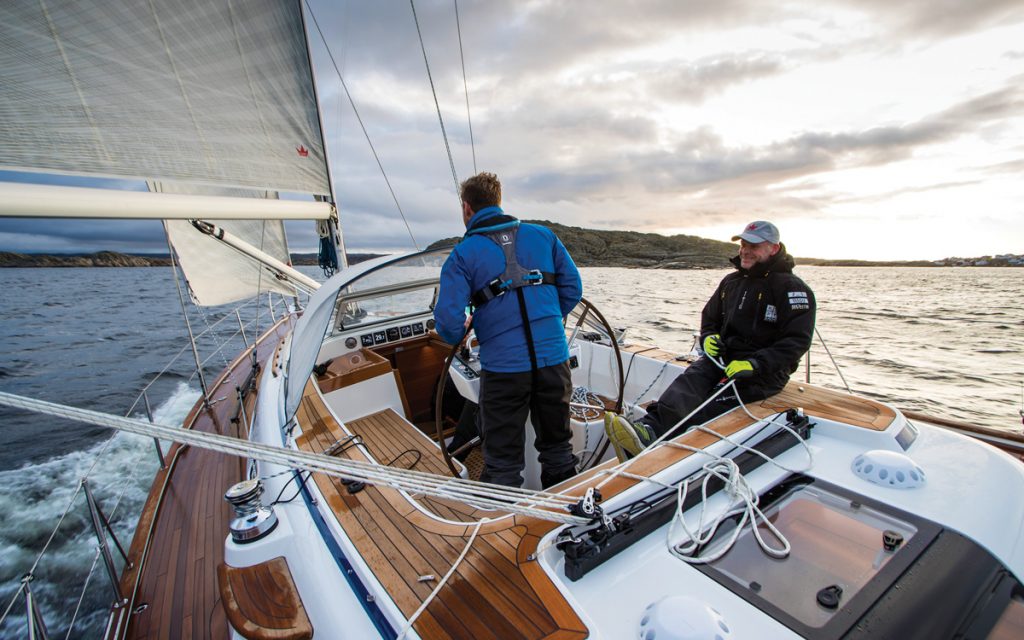
Internal Factors Affecting Safe Speed
Boat Stability and Control
Boat stability is an essential factor in determining a safe speed for your boat. A boat with good stability can handle higher speeds with more control, whereas a boat with inadequate stability may become difficult to maneuver or even capsize at high speeds. Factors that affect stability include the boat's design, shape, and draft. A boat with a shallow draft may be more susceptible to tipping over in rough waters (source).
It's essential to understand your vessel's capabilities and limitations to ensure you're traveling at a safe speed. Be aware of the effects of changes in load, the arrangement of passengers and cargo, and the influence of weather conditions on boat stability.
Engine Performance
The engine is another significant internal factor that affects the safe speed of a boat. The size and power of the engine determine how fast your boat can go (source). Larger engines can typically push a boat faster, while smaller engines have limitations due to their power output.
In addition to engine size, the boat's motor also plays a role in determining a safe speed. A boat with a well-maintained and properly functioning engine can safely achieve higher speeds, whereas a boat with a poorly maintained or malfunctioning engine may become unsafe to operate at the same speed levels.
To ensure a safe and enjoyable boating experience, it is crucial to keep the boat's engine in optimal condition. Regular maintenance, such as oil changes, spark plug replacements, and fuel system checks, can help maintain engine performance and ensure a higher level of safety when operating at speed.
In conclusion, understanding internal factors such as boat stability and engine performance is crucial in determining a safe speed for your boat. Be aware of your boat's limitations and regularly maintain your engine to ensure a safe and enjoyable time on the water.
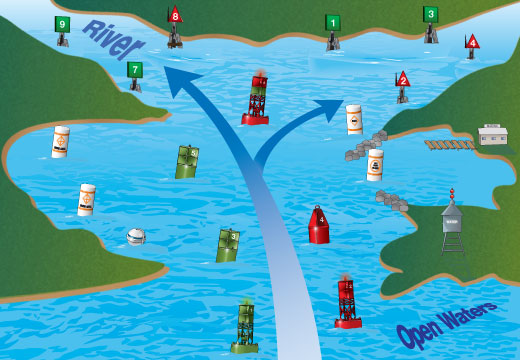
Hazards and Safety Precautions
Identifying Potential Hazards
When determining if a speed is safe for your boat, it's essential to identify potential hazards in the surrounding environment. Navigational hazards such as rocks, reefs, and shallow waters can pose a threat to your vessel's safety. Additionally, pay attention to the weather conditions, as factors like wind, waves, water depth, currents, and visibility can impact the safety and stability of your boat at various speeds ^1^.
Another crucial aspect is evaluating the boat traffic in the area. Frequent movement of other vessels raises the risk of collisions or accidents. Being aware of the boat traffic and following established navigation rules can minimize the chances of accidents.
Mitigating Risk
To mitigate the risk of accidents or capsizing, it is important to follow a few safety precautions:
- Safe cruising speed: Maintain a speed less than the maximum at which you can take proper and effective action to avoid collision and stop within a safe distance^2^.
- Alcohol: Avoid alcohol consumption while operating a boat, as it impairs judgment and reaction time, increasing the likelihood of accidents.
- Lifejackets: Ensure that all passengers on board are wearing lifejackets. A sudden change in conditions or an accident may not leave enough time for people to put on lifejackets.
- Communication: Maintain open communication with your passengers, informing them about any potential hazards and advising them to stay seated when the boat is in motion.
- Weather updates: Keep track of weather updates and forecasts. Adjust your speed according to the conditions, and avoid traveling during severe weather.
- Regular maintenance: Ensure that your boat is regularly maintained and is in good working condition to avoid any mechanical failures while on water.
By taking these important safety considerations into account and being proactive in identifying and mitigating potential hazards, you can maintain a safe speed for your boat and prevent accidents or capsizing.

Boating Safety Guidelines
Boating safety is of utmost importance, and understanding what determines a safe speed for your boat is crucial. Several factors come into play when determining the appropriate speed, such as the type of boat, weather conditions, water conditions, and surrounding traffic.
The first factor to consider is the state of visibility while boating. Fog, mist, snow, rain, and glare can impede your ability to see what's around you. Other obstacles, such as bridges, piers, and river bends, further limit your visibility. In these situations, it's important to slow down to give yourself more time to react to any potential hazards.
Another crucial aspect to take into account is the wake your boat produces. A larger wake can cause issues for other boaters and the shoreline, so maintaining a speed that minimizes your boat's wake is essential, especially when navigating through heavily trafficked areas or near sensitive marine habitats.
The number of passengers on your boat also affects safe speed. As more people get on board, the boat's stability and handling can be impacted, making it essential to adjust your speed accordingly. Be sure to provide passengers with cushions or seats to ensure their comfort and safety.
When it comes to safe speeds, knots are a useful unit of measurement to gauge your boat's velocity. In general, 20-30 mph (32-48 km/h) is considered a safe cruising speed for most pontoons, speedboats, and small boats. However, it's worth noting that this may vary depending on the specific boat and its purpose.
Weather and water conditions also play a major role in determining a safe speed. Heavy seas, high winds, or increased wave height require operators to slow down to maintain better boat control and prevent hull damage. In such situations, reducing your speed will also help mitigate the risk of injury to your crew.
In summary, various factors contribute to determining a safe speed for your boat. By carefully evaluating visibility, wake, passenger count, knots, and weather conditions, you can ensure a safe and enjoyable boating experience.
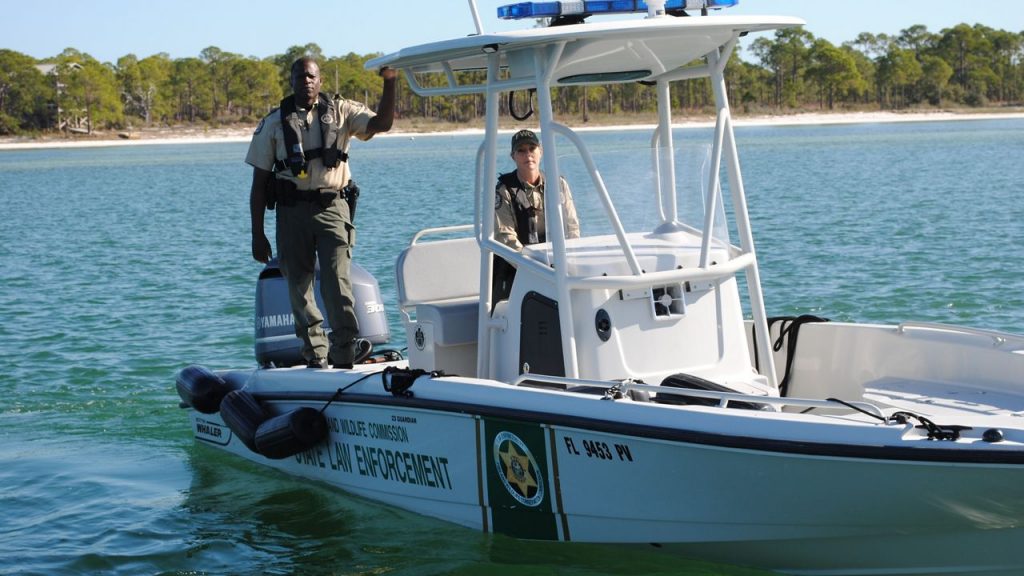
Understanding and Complying with Local Regulations
When operating a boat, it is essential to understand and comply with local regulations to determine a safe speed. Local authorities often impose posted speed limits to ensure the safety of all watercraft users in the area. These speed limits take into consideration factors such as the type of waterway, usage patterns, and potential hazards.
In addition to posted speed limits, it is crucial to consider the state of visibility. According to the International Regulations for Preventing Collisions at Sea (COLREGS), a safe speed must allow the operator to take proper and effective action to prevent collisions and stop within an appropriate distance. This means that during periods of low visibility, such as fog or heavy rain, boaters must reduce their speed to navigate safely.
Boaters should also be aware that local speed limits may vary depending on factors such as the time of day, specific zones, and water conditions. For example, there may be slower speed limits near swimming areas, marinas, or sensitive wildlife habitats. Staying informed and respecting the local rules is essential for ensuring everyone's safety on the water.
Some ways to stay up-to-date with local regulations include consulting local authorities, referring to nautical charts, or using mobile applications designed for boaters. By understanding and complying with local regulations and considering factors such as posted speed limits, the state of visibility, and local speed limits, boaters can ensure a safe and responsible experience on the water.

Frequently Asked Questions
What factors affect safe boat speed?
Several factors determine a safe boat speed. These include visibility conditions, boat size and type, operator abilities, water and weather conditions, surrounding traffic, and navigation rules.
How does boat size influence safe speed?
The size of a boat influences its safe operating speed, as larger boats may have more inertia and take longer to stop or change direction, while smaller boats may be more maneuverable. The boat's design also plays a role in determining its optimal and safe speed.
How do water and weather conditions impact safe speed?
Water and weather conditions can significantly impact a boat's safe speed. Rough water, strong winds, or rain can make maneuvering more challenging and reduce visibility. When encountering such conditions, it's crucial to take into account the prevailing circumstances and adjust your speed accordingly.
What role does visibility play in determining safe speed?
Visibility is crucial for operating a boat safely, as it allows the operator to see obstacles, other vessels, and water conditions. Low visibility may require a slower boat speed, providing enough time to stop and avoid a collision.
How does boat traffic affect safe speed?
Boat traffic affects safe speed by creating potential obstacles and requiring the operator to remain vigilant in monitoring other vessels. High traffic density may necessitate a slower speed to avoid collision and maintain proper distance from other boats.
How do navigation rules influence safe boat speed?
Navigation rules, such as traffic separation schemes, speed limits in specific areas, and general guidelines for avoiding collisions, help define a safe boat speed. These rules vary depending on the location and nature of the waterway, and adhering to them ensures the operator maintains a safe speed while navigating.
Charlie is Editor-in-Chief of Sea Magazine